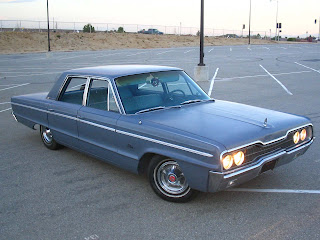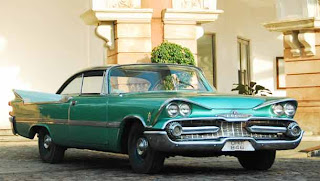CAR REVIEW | Dodge | Dodge is a brand of cars, sport utility vehicles (SUV), multi-purpose vehicles (MPV), and pickup, produced and marketed by the Chrysler Group, LLC in 60 countries around the world. Dodge was founded by the Dodge Brothers Company in 1900 to supply parts and assemblies for Detroit's automotive industry. Dodge started to make their full own cars in 1914. The Dodge brand then was sold to Chrysler in 1928.
 |
| Dodge RAM, 1997 |
The Dodge sale to Chrysler was passed through the short-lived Daimler-Chrysler merger of 1998–2007 as part of the Chrysler Group, was a part of Chrysler LLC owned by Cerberus Capital Management, a private equity investment firm, and is now a part of the Chrysler Group LLC which has an alliance with Fiat. Fiat has plans to evolve many Dodge, Chrysler, and Jeep existing platforms and products into Fiat-Chrysler co-developed vehicles.
 |
| Dodge CHallenger R/T, 1970 |
After establishing the company of Dodge Brothers by Horace and John Dodge in 1900, the company produced engine components and chassis of the vehicle. John Dodge in 1913 said that he no longer willing to only as "supplier" for Henry Ford, then in 1914 he and Horace agreed to make four-cylinder vehicles (Dodge Model 30). They made this car has all-steel body, while most other companies there are still elements of the wood. Besides the existing 12 volt electrical system, (cars with 6 volt electrical system was still existed until the 1950s) and a sliding-gear transmission. The company developed by the Dodge brothers were successful because of their good quality, and the company soon became the second largest company by sales in the U.S. market in 1916.
 |
| Dodge Polara, 1966 |
By 1914, Horace had found a solution by creating the new four-cylinder Dodge Model 30. Marketed as a slightly more upscale competitor to the ubiquitous Ford Model T, it pioneered or made standard many features later taken for granted: all-steel body construction (the vast majority of cars worldwide still used wood-framing under steel panels, though Stoneleigh and BSA used steel bodies as early as 1911); 12-volt electrical system (6-volt systems would remain the norm until the 1950s); and sliding-gear transmission (the best-selling Model T would retain an antiquated planetary design until its demise in 1927). As a result of this, and the brothers' well-earned reputation for quality through the parts they made for other successful vehicles, Dodge Brothers cars were ranked at second place for U.S. sales as early as 1916. That same year, Henry Ford decided to stop paying stock dividends to finance the construction of his new River Rouge complex. This led the Dodges to file suit to protect their annual stock earnings of approximately one million dollars; this led Ford to buy out his shareholders, and the Dodges were paid some US$25 million.
 |
| Chrysler Dodge Custom Royal, 1959 |
The Dodge Brothers vehicles in 1916 also won acclaim for durability while in service with the U.S. Army's Pancho Villa Expedition into Mexico. A notable example was in May, when the Sixth Infantry received a reported sighting of Julio Cardenas, one of the most trusted subordinates Villa. Lieutenant George S. Patton led ten soldiers and two civilian guides in three Dodge Model 30 touring cars to conduct a raid on a ranch house in San Miguelito, Sonora. In the firefight the party killed the three men, one of whom was identified as Cardenas. Patton's men tied the body to escape hoods, back at headquarters in Dublán and enthusiastically of American journalists. - CAR REVIEW
